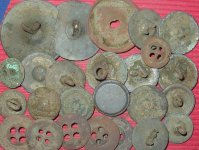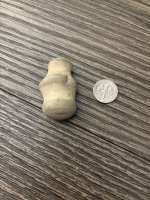GoldieLocks
Bronze Member
So I am into beading necklaces and bracelets.
I make all newly used pieces, and also spotlight antique beads no longer most-likely in production .
I got a nice costume jewelery looking piece with a small SeT of pearls. However I dint know if they could be real?? My friend said rub then on your teeth. I tried to peel back the coating back if one was fake, but couldn't. Does anyone else have a more simple way to check? Try to float them in water?
I make all newly used pieces, and also spotlight antique beads no longer most-likely in production .
I got a nice costume jewelery looking piece with a small SeT of pearls. However I dint know if they could be real?? My friend said rub then on your teeth. I tried to peel back the coating back if one was fake, but couldn't. Does anyone else have a more simple way to check? Try to float them in water?




